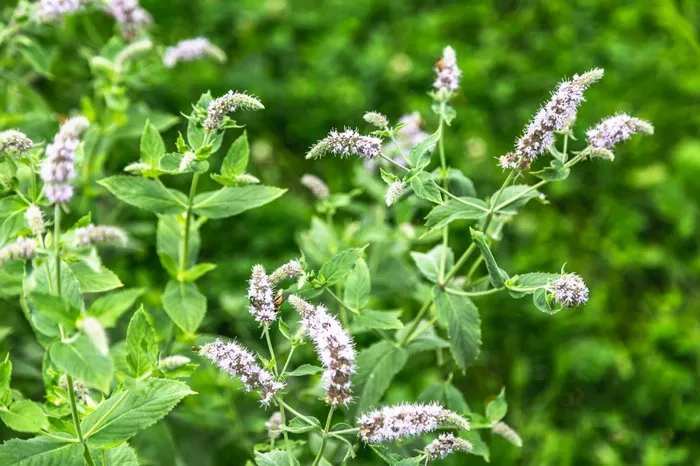Mint, a beloved herb renowned for its refreshing flavor and aromatic qualities, also boasts a surprisingly delicate and beautiful flowering stage. While many are familiar with the culinary and medicinal uses of mint, its flowers often go unnoticed or unappreciated. In this article, we delve into the fascinating world of mint flowers, exploring their appearance, characteristics, and the botanical insights that make them unique.
Introduction to Mint Flowers
Mint plants (Mentha spp.) are members of the Lamiaceae family, commonly known as the mint or deadnettle family. They are characterized by their square stems, aromatic leaves, and tendency to spread vigorously in favorable growing conditions. The flowers of mint plants emerge from spikes in various shades of white, pink, and purple, depending on the species and variety.
The Structure of Mint Flowers
Mint flowers typically grow in dense clusters along terminal spikes, which can vary in length depending on the species. Each individual flower consists of several key parts:
1. Calyx: The outermost part of the flower, the calyx, is made up of sepals fused together into a tube-like structure. In mint plants, the calyx is often tubular with teeth or lobes that give it a distinctive appearance.
2. Corolla: Inside the calyx, the corolla comprises petals fused into a tube or a two-lipped structure. Mint flowers commonly have a bilabiate (two-lipped) corolla, characteristic of many Lamiaceae family members.
3. Stamens and Pistil: Mint flowers typically have four stamens (male reproductive organs) and a single pistil (female reproductive organ). The stamens are often positioned in pairs and are prominent due to their contrasting color against the petals.
Varieties of Mint Flowers
The diversity within the genus Mentha gives rise to a wide range of mint flower variations. Some of the most common mint species and their flowering characteristics include:
1. Peppermint (Mentha × piperita): Peppermint flowers are generally pinkish-purple and grow in dense cylindrical spikes.
2. Spearmint (Mentha spicata): Spearmint flowers are pink or lilac and form dense clusters along erect spikes.
3. Apple Mint (Mentha suaveolens): Apple mint flowers are pale pink or white and are borne in whorls around the stem.
These variations not only contribute to the aesthetic appeal of mint plants but also play a role in identifying different species and hybrids within the genus.
Seasonal Blooming and Lifecycle
Mint plants typically bloom during the summer months, from late spring to early fall, depending on the geographic location and climate. The blooming period is crucial for pollination, as mint flowers attract a variety of pollinators such as bees, butterflies, and hoverflies with their nectar and fragrance.
The lifecycle of mint flowers begins with the emergence of flower buds from the leaf axils or terminal spikes of the plant. As the buds develop, they gradually open to reveal the colorful petals and reproductive organs within. Once pollinated, the flowers give way to small, nut-like fruits containing seeds that ensure the plant’s propagation.
Cultural and Culinary Significance
Beyond their ornamental value, mint flowers hold cultural and culinary significance in various traditions around the world. In culinary applications, mint flowers are sometimes used as a decorative garnish in salads, desserts, and beverages, adding a touch of color and subtle mint flavor. In some cultures, mint flowers are also brewed into teas or infused into oils for their aromatic qualities.
SEE ALSO: A Quick Guide to Plants Suitable for Water Rooting
Gardening Tips for Growing Mint
For those interested in cultivating mint and enjoying its flowers in their garden, here are some essential gardening tips:
1. Sun and Soil: Mint plants thrive in well-drained soil and prefer partial shade to full sun exposure.
2. Watering: Keep the soil consistently moist but avoid overwatering, as mint plants are susceptible to root rot in waterlogged conditions.
3. Container Gardening: Due to its invasive nature, growing mint in containers is recommended to control its spread and prevent it from overtaking other garden plants.
Regular pruning of mint plants not only promotes healthy growth but also encourages the production of flowers. Deadheading spent blooms can prolong the flowering period and enhance the overall appearance of the plant throughout the growing season.
The Importance of Pollinators
Mint flowers play a crucial role in supporting local ecosystems by attracting pollinators such as bees, which in turn contribute to the pollination of other nearby plants. This ecological service helps maintain biodiversity and supports agricultural productivity by ensuring the reproduction of flowering plants.
Botanical Insights and Taxonomy
From a botanical perspective, mint flowers exhibit several fascinating characteristics that are key to their classification within the plant kingdom. The genus Mentha encompasses a diverse group of species and hybrids, each with distinct floral traits that aid in their identification and differentiation. Taxonomists study these traits, along with genetic markers, to classify and categorize mint plants accurately.
Conclusion
In conclusion, mint flowers represent a captivating aspect of these versatile plants, offering not only aesthetic beauty but also ecological and culinary significance. Their diverse colors, intricate structures, and seasonal blooming patterns make them a delight to observe and cultivate in gardens worldwide. Whether grown for their aromatic leaves, medicinal properties, or simply for their ornamental value, mint plants and their flowers continue to enrich our lives in multifaceted ways. As we appreciate their beauty and functionality, we also recognize the importance of conserving and preserving these botanical treasures for future generations to enjoy.


